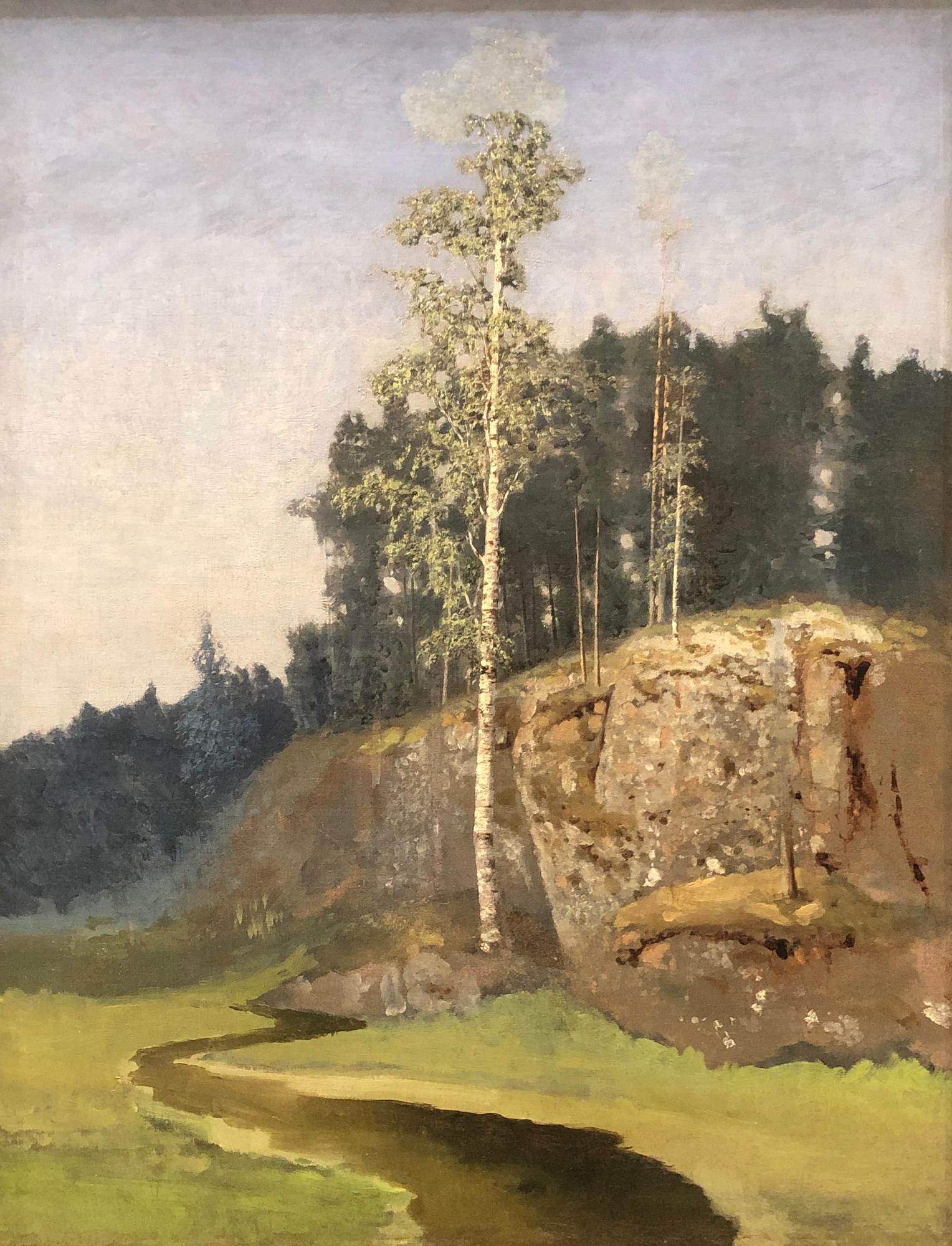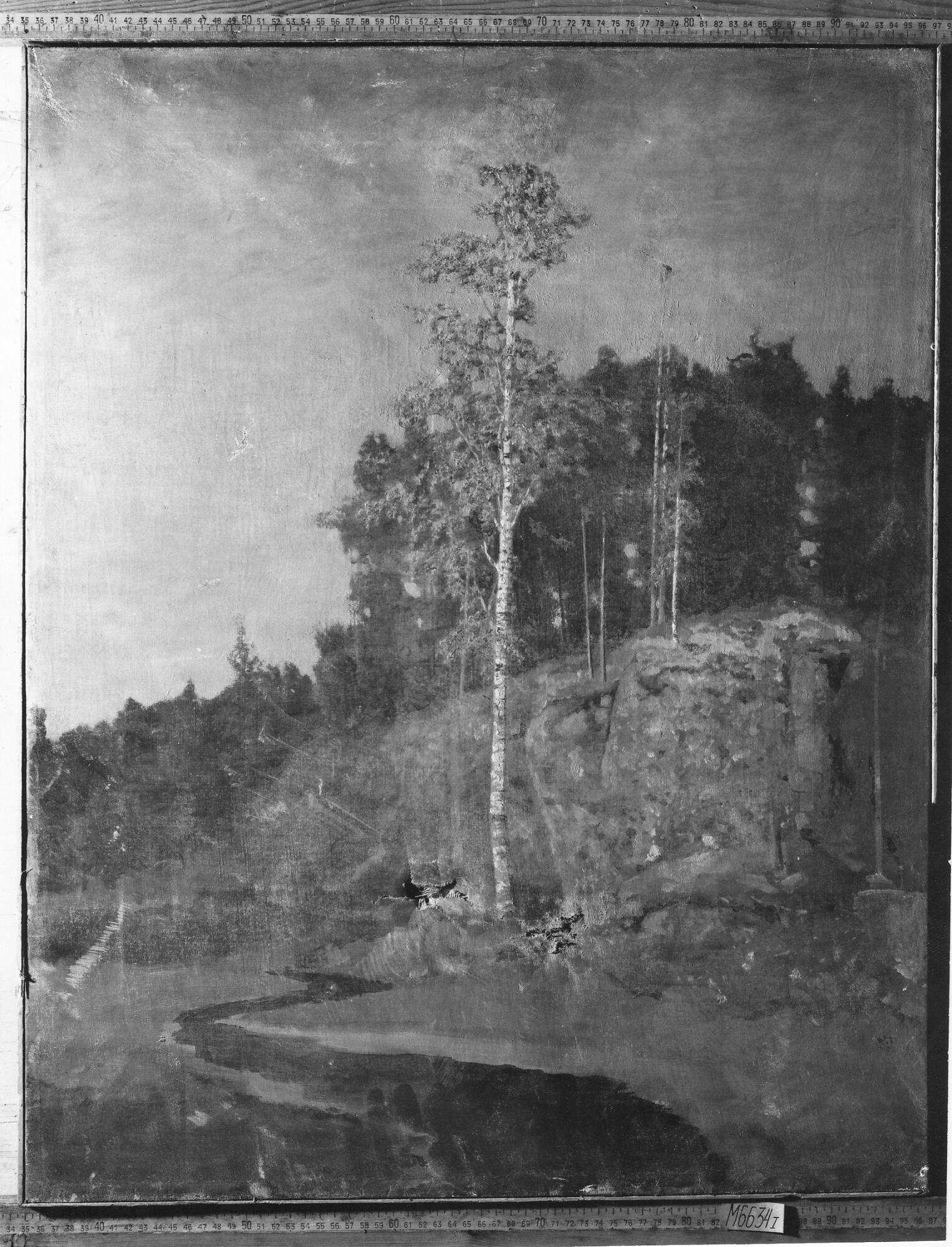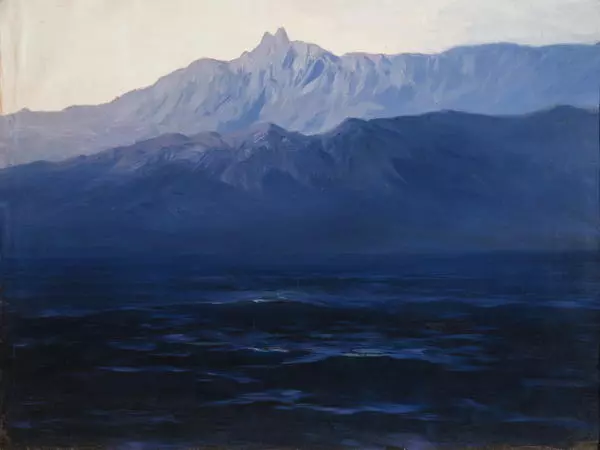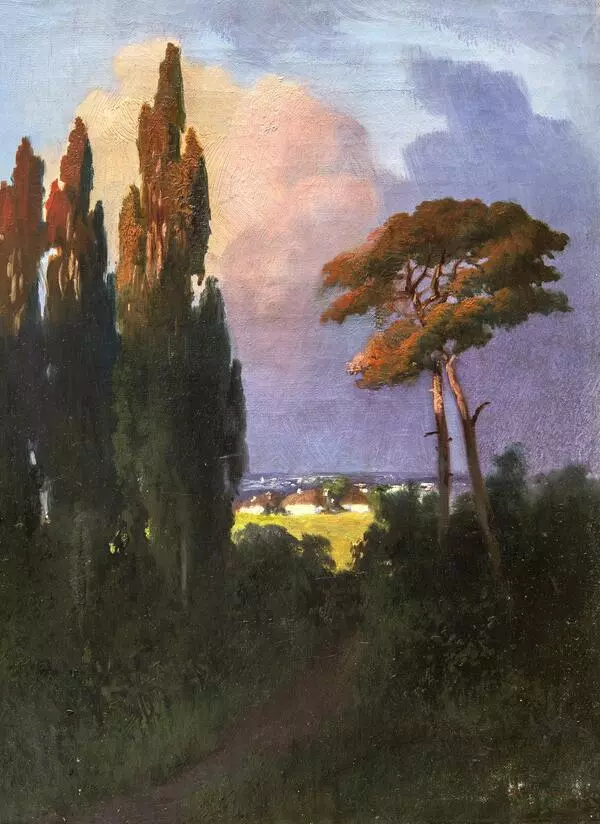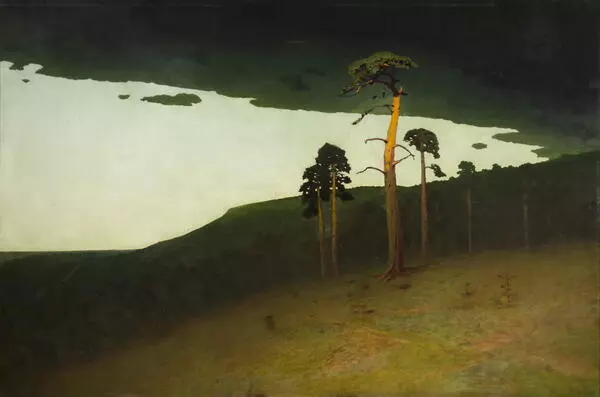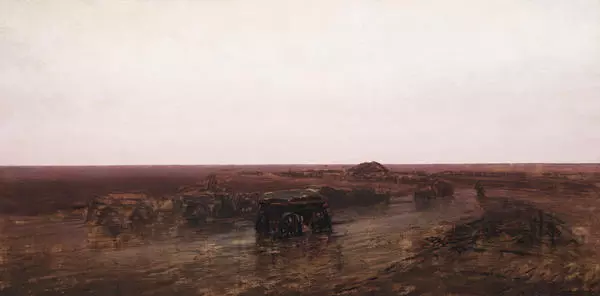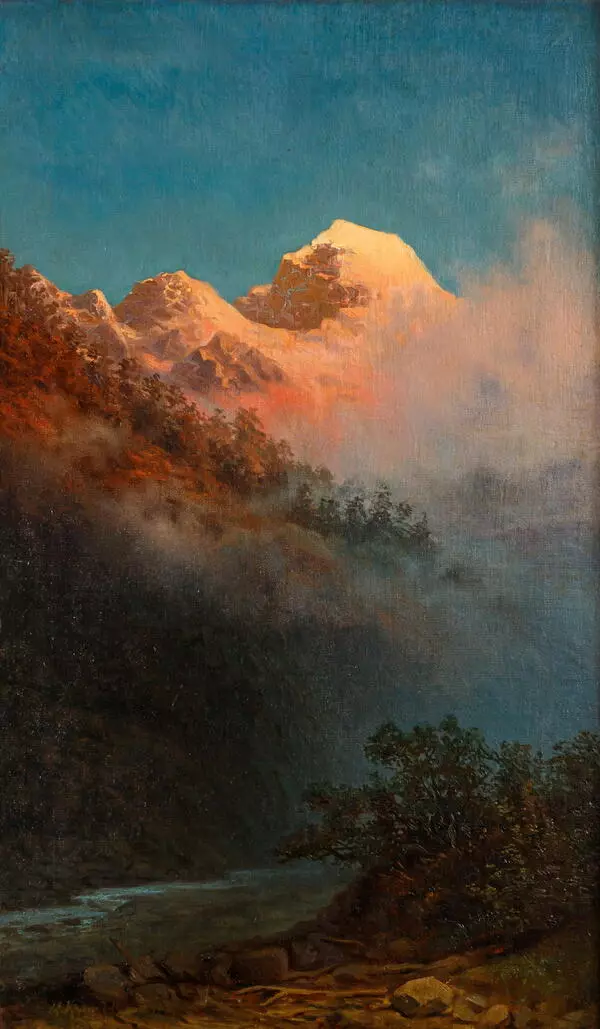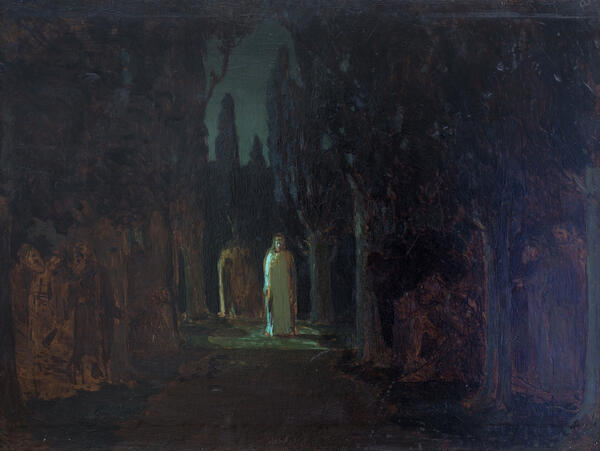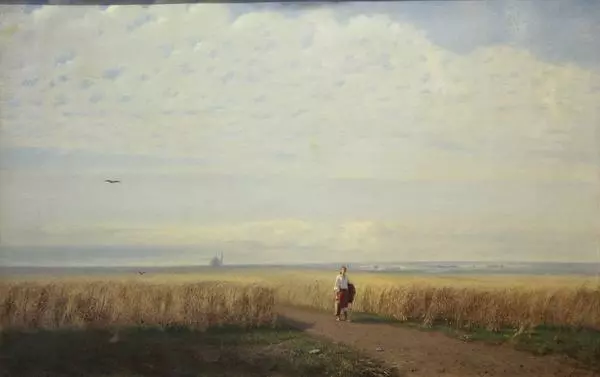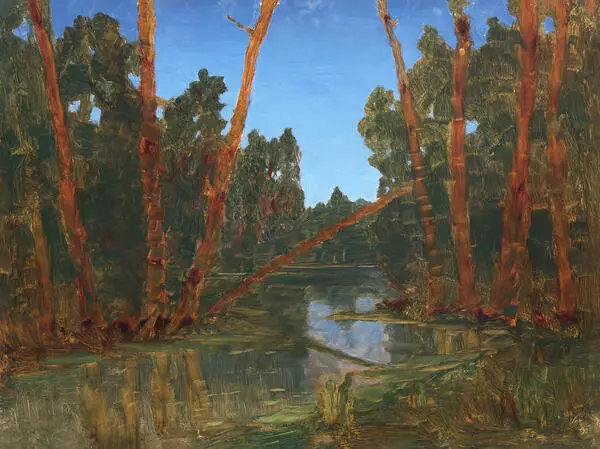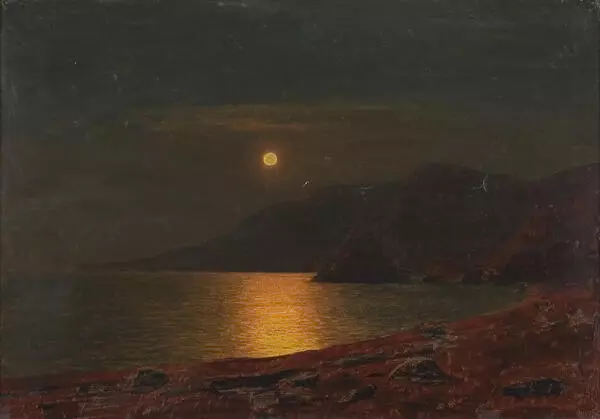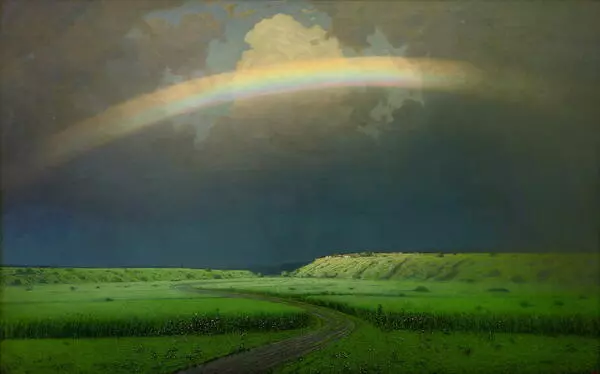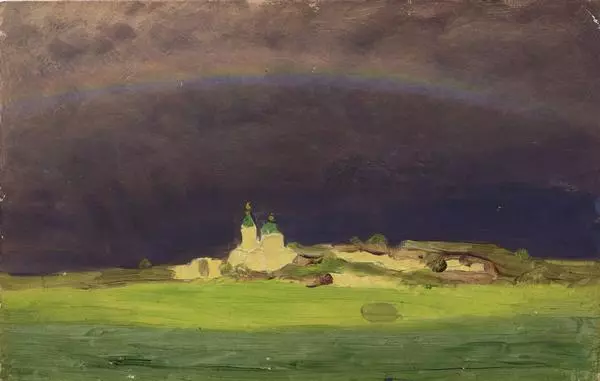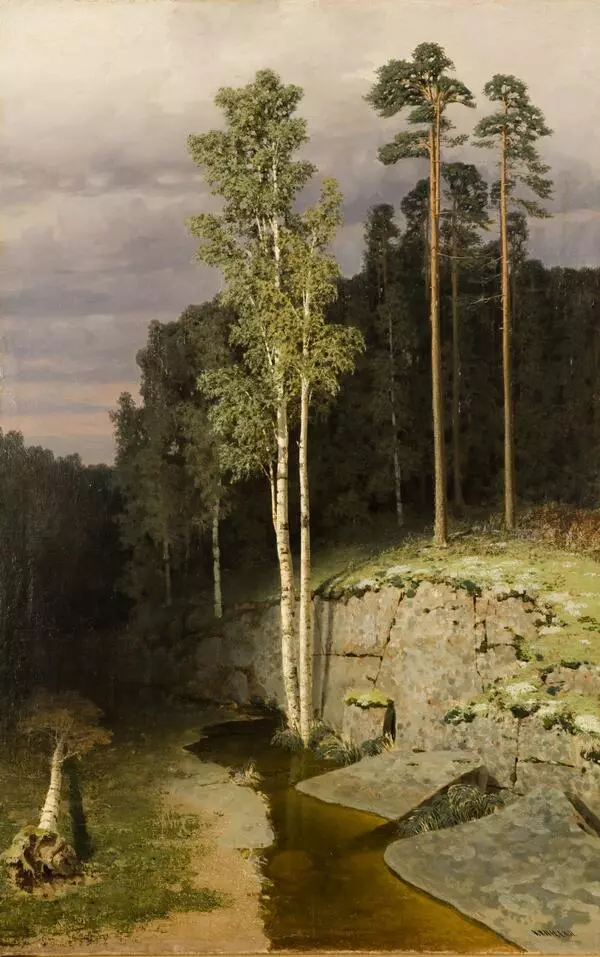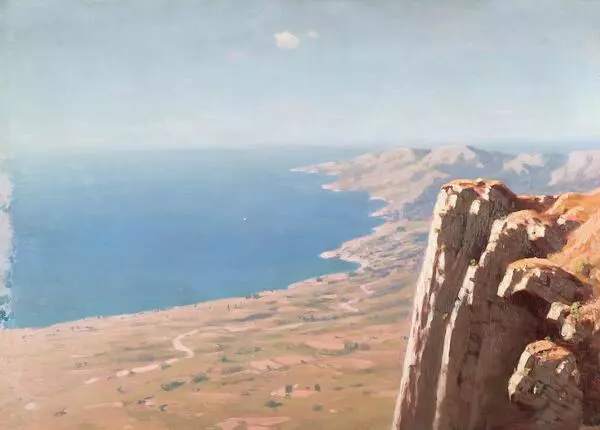Arkhip Kuindzhi painted the study At Valaam in 1873 showing natural scenery of Valaam Island on Lake Ladoga – bare, rocky coast with a sheer cliff towering above it. The landscape is filled with silvery light, suggestive of approaching sunset or a brewing thunderstorm.
In the foreground, a narrow river winds away past a birch tree fighting its way through heavy soil. In the distance up on the cliff there is another tree with a white trunk. These repeating objects add rhythm to the composition.
The study was never completed. Some parts of the composition are executed in full detail while others are only vaguely outlined, which makes this piece of art especially interesting as it shows to the viewer the artist’s work in progress.
Valaam was a favorite plein air destination for St. Petersburg landscapists. Arkhip Kuindzhi would spend the whole summer on the island which became a source of inspiration for him. His artistic legacy includes many studies, drawings and canvases depicting Valaam. Based on a series of studies, Kuindzhi created his famous painting At Valaam, which he started working on as soon as he returned home. The painting received enthusiastic comments. According to painter Ilya Repin, “everybody just loves it, and Kramskoi, who visited me today, is thrilled with it”.
Arkhip Kuindzhi was a famous Russian landscape painter of Greek descent. In the 1870’s he shared the ideas of the Peredvizhniki (‘Itinerants’) artists association. His works of the period manifest the group’s aspiration to show reality unadorned. Towards 1880’s Kuindzhi departed from that principle and developed a new type of romantic landscape. Under his brush real location would now appear as bright, theatrical scenery.
Among the painter’s friends were chemist Dmitry Mendeleev and physicist Fyodor Petrushevsky. Together they experimented with paint formulas and studied optical effects of color. Contemporary observers got the impression that some of Kuindzhi’s paintings gleamed from within.
In the foreground, a narrow river winds away past a birch tree fighting its way through heavy soil. In the distance up on the cliff there is another tree with a white trunk. These repeating objects add rhythm to the composition.
The study was never completed. Some parts of the composition are executed in full detail while others are only vaguely outlined, which makes this piece of art especially interesting as it shows to the viewer the artist’s work in progress.
Valaam was a favorite plein air destination for St. Petersburg landscapists. Arkhip Kuindzhi would spend the whole summer on the island which became a source of inspiration for him. His artistic legacy includes many studies, drawings and canvases depicting Valaam. Based on a series of studies, Kuindzhi created his famous painting At Valaam, which he started working on as soon as he returned home. The painting received enthusiastic comments. According to painter Ilya Repin, “everybody just loves it, and Kramskoi, who visited me today, is thrilled with it”.
Arkhip Kuindzhi was a famous Russian landscape painter of Greek descent. In the 1870’s he shared the ideas of the Peredvizhniki (‘Itinerants’) artists association. His works of the period manifest the group’s aspiration to show reality unadorned. Towards 1880’s Kuindzhi departed from that principle and developed a new type of romantic landscape. Under his brush real location would now appear as bright, theatrical scenery.
Among the painter’s friends were chemist Dmitry Mendeleev and physicist Fyodor Petrushevsky. Together they experimented with paint formulas and studied optical effects of color. Contemporary observers got the impression that some of Kuindzhi’s paintings gleamed from within.
